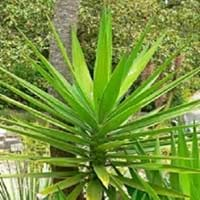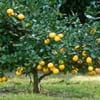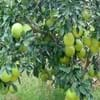Life Span
Perennial
Perennial
Origin
Mexico, Central America
Southwestern United States, Mexico
Types
Reinikie, Dade, Pike, Suebelle and Golden
Climate
Yucca aloifolia 'Purpurea' , Yucca aloifolia
Number of Varieties
Not Available
Habitat
Tropical Highlands
coastal environs, Coastal sand dunes, mild coastal areas
USDA Hardiness Zone
8-11
7-9
Sunset Zone
H1, H2, 14, 15, 16, 17, 18, 19, 20, 21, 22, 23, 24
2a, 2b, 3a, 3b, 4, 5, 6, 7, 8, 9, 10, 11, 12, 13, 14, 15, 16, 17, 18, 19, 20, 21, 22, 23, 24
Habit
Oval or Rounded
Rosette/Stemless
Minimum Height
Not Available
Minimum Width
Not Available
Flower Color
Light Green, Ivory
White
Flower Color Modifier
Bicolor
Not Available
Fruit Color
Light Yellow, Yellow green, Light Green
Brown
Leaf Color in Spring
Green, Dark Green
Blue Green
Leaf Color in Summer
Green, Dark Green
Blue Green
Leaf Color in Fall
Green, Dark Green
Blue Green
Leaf Color in Winter
Light Green
Blue Green
Leaf Shape
Alternate
long with sharp edges
Plant Season
Spring, Summer, Fall, Winter
Spring, Summer, Fall, Winter
Sunlight
Full Sun
Full Sun
Growth Rate
Fast
Very Slow
Type of Soil
Loam, Sand
Loam, Sand
The pH of Soil
Acidic, Neutral
Acidic, Neutral, Alkaline
Soil Drainage
Well drained
Well drained
Bloom Time
Winter, Late Winter
Late Spring, Early Summer
Tolerances
Drought
Drought, Salt
Where to Plant?
Ground
Ground
How to Plant?
Budding, Grafting, Seedlings, Vegetative
Cuttings, Divison
Plant Maintenance
Medium
Medium
Watering Requirements
Do not water frequently, Needs more water during establishment, Water during dry weather
Keep the Soil well drained, Needs very little water
In Summer
Lots of watering
Lots of watering
In Spring
Moderate
Moderate
In Winter
Average Water
Average Water
Soil pH
Acidic, Neutral
Acidic, Neutral, Alkaline
Soil Type
Loam, Sand
Loam, Sand
Soil Drainage Capacity
Well drained
Well drained
Sun Exposure
Full Sun
Full Sun
Pruning
Remove damaged leaves, Remove dead branches, Remove dead leaves
Remove damaged leaves, Remove dead branches, Remove dead leaves
Fertilizers
All-Purpose Liquid Fertilizer
All-Purpose Liquid Fertilizer
Pests and Diseases
Red blotch
Leaf spot, Scale
Plant Tolerance
Drought
Drought, Salt
Flowers
Insignificant
Showy
Flower Petal Number
Single
Single
Fragrant Flower
Not Available
Yes
Foliage Texture
Medium
Bold
Foliage Sheen
Matte
Matte
Attracts
Birds
Butterflies, Not Available
Allergy
drowsiness
Unknown
Aesthetic Uses
Not Used For Aesthetic Purpose
Borders, Cottage Garden, Wild gardens, Woodland margins
Beauty Benefits
Not Available
Not Available
Environmental Uses
Air purification
Air purification
Medicinal Uses
Anti-carcinogenic effects, Colon Cancer
No Medicinal Use
Part of Plant Used
Fruits, Pulp, Seeds
Not Available
Other Uses
Used As Food
Beneficial species for attracting pollinators
Used As Indoor Plant
No
No
Used As Outdoor Plant
Yes
Yes
Garden Design
Edible, Fruit / Fruit Tree, Shade Trees, Tropical
Rock Garden, Wall, Wildflower
Botanical Name
CASIMIROA edulis
Yucca gloriosa
Common Name
White Sapote
spanish dagger
In Hindi
White Sapote
Spanish Bayonet
In German
White Sapote
Spanish Bayonet
In French
Sapote blanche
Spanish bayonet
In Spanish
White Sapote
Spanish bayonet
In Greek
White Sapote
Spanish bayonet
In Portuguese
White Sapote
Spanish bayonet
In Polish
White Sapote
Spanish bayonet
In Latin
White Sapote
Spanish bayonet
Phylum
Magnoliophyta
Magnoliophyta
Class
Magnoliopsida
Liliopsida
Order
Sapindales
Liliales
Family
Rutaceae
Agavaceae
Clade
Angiosperms, Eudicots, Rosids
Angiosperms, Monocots
Tribe
Not Available
Not Available
Subfamily
Not Applicable
Agavoideae
Number of Species
Not Available
Importance of White Sapote and Spanish Bayonet
Want to have the most appropriate plant for your garden? You might want to know the importance of White Sapote and Spanish Bayonet. Basically, these two plants vary in many aspects. Compare White Sapote and Spanish Bayonet as they differ in many characteristics such as their life, care, benefits, facts, etc. Every gardener must at least have the slightest clue about the plants he wants to plant in his garden. Compare their benefits, which differ in many ways like facts and uses. The medicinal use of White Sapote is Anti-carcinogenic effects and Colon Cancer whereas of Spanish Bayonet is No Medicinal Use. White Sapote has beauty benefits as follows: Not Available while Spanish Bayonet has beauty benefits as follows: Not Available.
Compare Facts of White Sapote vs Spanish Bayonet
How to choose the best garden plant for your garden depending upon its facts? Here garden plant comparison will help you to solve this query. Compare the facts of White Sapote vs Spanish Bayonet and know which one to choose. As garden plants have benefits and other uses, allergy is also a major drawback of plants for some people. Allergic reactions of White Sapote are drowsiness whereas of Spanish Bayonet have Unknown respectively. Having a fruit bearing plant in your garden can be a plus point of your garden. White Sapote has showy fruits and Spanish Bayonet has showy fruits. Also White Sapote is not flowering and Spanish Bayonet is not flowering . You can compare White Sapote and Spanish Bayonet facts and facts of other plants too.





